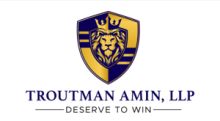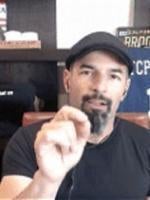I love the rules of evidence.
I know that doesn’t surprise you. I love the rules of everything–so long as they’re black and white. And the rules of evidence are better than most rules because they were carefully calibrated to assist the jury’s pursuit of what matters most–the objective truth.
Again, I love the rules of evidence. And I simply crushed at evidence–both in law school and during my days as a trial lawyer when I won more than one case based upon well-timed evidentiary objections.
But some folks struggle with the rules–especially when it comes to hearsay.
Simply stated the hearsay rule boils down to this: the jury shouldn’t believe what anybody says is true unless they are in the courtroom staring them in the eyes when they say it. Its one of those “if you wont say it to my face then dont say it at all” rules, and its an important one.
Now, there are a number of “exceptions” and there are a number of statements that are “not hearsay” that otherwise might be. And I think that’s where people get confused. But, truthfully, they are pretty straightforward.
So in Lindenbaum v Realgy, 2022 WL 2047799, 1:19 CV 2862 (N.D. Oh. 06/07/2022)–yes, that Lindenbaum case–the Plaintiff just lost a case on remand after winning on appeal because the Court would not accept a hearsay statement by the Defendant’s agent into evidence.
Before we analyze that ruling you need to understand the fact a bit more so you can really understand the craziness here. Here are the facts:
-
Defendant sells stuff.
-
Plaintiff received a call from somebody offering to sell the stuff Defendant sells.
-
That somebody said they worked for Defendant.
-
Defendant makes calls to sell the stuff Plaintiff was called about but says it has no record of calling Plaintiff.
-
Defendant also admits it hires other people to call people to sell the stuff that it sells.
Now, the remarkable thing is that the Plaintiff, apparently:
-
Did not take a deposition to ask the Defendant whether the people it hires to make calls on its behalf called the Plaintiff; and
-
Did not depose or subpoena any of the third-parties that make calls to sell stuff to see if they called the Plaintiff.
Hmmmm.
Instead, the Plaintiff rested essentially their entire case on introducing the call recording of the caller saying they worked for the Defendant.
And that, of course, is where the hearsay rule comes in.
Now, make no mistake, had the caller been in court–or submitted a declaration–to the effect that they worked for Defendant that would be admissible. (Not hearsay).
So too, if the Defendant admitted that the caller worked for it then the caller’s statements then other statements made on the recording could have been admitted–party opponent exception.
But here the caller was not subpoenaed to provide a declaration or testimony and the Defendant did not agree that the caller was employed by it. So the only way Plaintiff could prove its case is if the Court determined that the recorded statement was true.
Enter the hearsay rule.
Stated in legal jargon the hearsay rule prevents the introduction of “out-of-court statements” for the “truth of the matter of the matter asserted. Plainly the statement on the recording was “out of court.” And plainly the Plaintiff wanted to introduce it to prove the truth of the statement–that the caller worked for the Defendant–so hearsay all day.
The Plaintiff tried to apply some really far-fetched and inapplicable exceptions but none of them really come close. Their best shot was the residual hearsay exception but there was simply ZERO way to assess the reliability of the recorded statement since no one could positively identify who the caller was or where they worked. So they could have been some scammer, cheat or ne’erdowell. So there was no basis to take the word of this could-be-weirdo.
In the end, Defendant wins the case because there was simply no admissible evidence that the call was made by it or on its behalf–despite the existence of a call recording of an agent literally saying it was the Defendant calling. Pretty cool, no?
And while this is a fun hyper-technical outcome (good lawyering Ryan and Paul!) please don’t make any mistake about the limited scope of this ruling. Again, all Plaintiff had to do to win (probably) was issue a couple of subpoenas.
Plus this is a VERY different scenario from cases where an agent DOES work for a Defendant and makes some knucklehead statement–like “we use an autodialer”–those statements are more likely to be admissible as a party opponent admission (although not always.)
In other words, the rules against hearsay are great. But they can sometimes be limited. Lindenbaum shows where they are mot effective. But don’t let that give you an over-inflated sense of security (that’s what retaining me is for.)
Chat soon.




 />i
/>i

